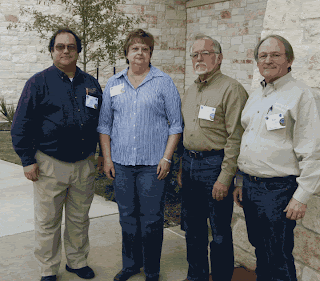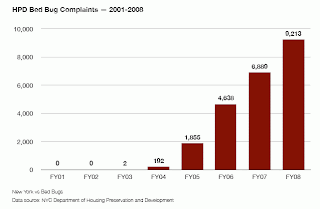
Urban pest control encompasses an incredibly wide range of organisms including insects, arachnids, birds, bats and a smorgasbord of urban wildlife. I was reminded of this yesterday with a call from a PMP seeking help with flea control in prairie dog towns. It seems there is a plague epidemic among the prairie dogs living in and around Santa Fe, New Mexico.
Since
plague is not a common phenomenon in the United States, a little background might be helpful. Plague is a disease caused by a bacterium called
Yersinia pestis. The bacterium can be transmitted through the bite of an infected flea, through handling or skinning an infected animal or through the air from an infected human (or more frequently, cat) similar to flu. The term "plague" stirs most people because of its association with the black death of Europe, when dozens of millions died over a 300 year period starting in the 14th century.
There are two ecological forms of plague: urban plague, spread largely by commensal rats; and sylvatic plague, which is spread largely by wild rodents in rural areas. Both forms of plague remain a threat in this country, though the last outbreak of urban plague occurred in Los Angeles in the 1920s. Most recent U.S. cases of plague, 10-15 a year, are sylvatically transmitted and
occur over scattered sites in the western states, including a few in Texas.
Rodent control by PMPs has, without a doubt, helped keep urban forms of plague rare over the past century. But effective pest control for public health is still needed to control of sylvatic plague in some areas. In the current Santa Fe epidemic, for example, one of the affected prairie dog colonies is adjacent to a school playground in an urban neighborhood.
Unfortunately, some citizens and politicians appear not to appreciate the seriousness of arthropod-borne disease. Perhaps this is because of our success in keeping arthropod-borne disease rare. Maybe it's a need for better public health education or a lack of understanding of science and medicine. Whatever the reason, in recent years I see more instances where vague health and environmental concerns seem to be trumping well-documented and real concerns about insect-vectored disease.
In Santa Fe, citizen pressure in recent years has led to schools and the city replacing effective conventional pesticides with generally untested, organic alternatives. One specific consequence of this approach is that city workers are being encouraged to use diatomaceous earth for control of
Xenopsylla cheopsis, oriental rat flea, in prairie dog burrows. In a cursory review of the literature I could find no information to justify use of diatomaceous earth for flea control in prairie dog burrows. I
was, however, able to quickly find peer-reviewed research on the effectiveness of field applications to prairie dog burrows of several other insecticides including carbaryl, DDVP, permethrin, deltamethrin, and pyriproxifen.
While it can be argued that none of these products provide an ideal, long-lasting or inexpensive solution to plague-bearing fleas, they do provide significant, quick control of fleas. They can also rapidly prevent or eliminate plague outbreaks in prairie dog towns. And at least some of these tested products should be acceptable to the staunchest pesticide critics. Pyriproxifen, in particular, is a low toxicity insect growth regulator that has shown excellent flea control in prairie dog burrows with minimal ecological disruption.
Highly specific oral vaccines for prairie dogs are also being tested with promise for providing a longer-term solution to plague outbreaks.
On the other hand,
my own work several years ago with cat fleas showed that although diatomaceous earth can control fleas under dry laboratory conditions, the addition of moisture to treated soil quickly renders treatments ineffective for control of adult and larval fleas. This casts serious doubt on the effectiveness of field applications of diatomaceous earth dust into damp underground burrows. At the very least it points out the need for field testing before recommending such treatments.
So why would a respectable community persist in requiring an untested, most-likely ineffective pesticide to control plague-bearing fleas? In this case it seems to be because anti-pesticide advocates, armed with little more than an easily-transmitted fear of technology, are able to persuade policy makers that "natural" is always better and safer. The same strategy is being used in my community to
spread fear about the responsible, professional use of mosquito spray campaigns in areas of high West Nile virus risk. The big problem here is that untested recommendations are being taken seriously by government and public health.
It is one thing to choose to use untested home recipes in a backyard garden, where the worst that can happen is for the gardener to lose a few of his or her own plants. It's another thing to pressure communities to stop using proven pest control technology against pests that threaten community health. It make sense that before a community switches from a proven technology, advocates should provide (1) proof that the current technology poses an environmental or health cost that exceeds the value of the benefits provided, and (2) evidence that alternatives are both safer and equally effective as the current technology.
Decision-makers at the school, local and state level
need to understand both the science and the stakes involved before restricting the kinds of pesticides that can be used by pest management professionals. This is what I believe is wrong with the growing crop of local ordinances banning municipal governments from using certain classes of pesticides in parks and schools and other public places.
You will get little argument from me that pesticides pose their own share of unique environmental and health challenges, but the problem is often less than the public is led to believe. And in many cases, the negative impacts of pesticides can be blunted by keeping them in the hands of professionals and using them in the context of a well thought-out IPM program. Our ability to control pests quickly at reasonable cost, often with a high degree of selectivity and environmental compatibility, means that pesticides will continue to be a valuable part of pest control in the foreseeable future.
I do not live in Santa Fe, and cannot speak to all the issues and circumstances of their plague management program there. But if I were a parent with a child in school next to a prairie dog town with a known plague outbreak, I know I would want a control option that had been tested and shown effective.



























